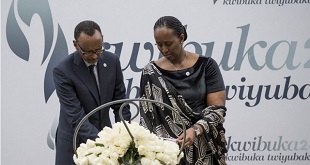How the annual events fan the flame of ethnicity.
Each year, Rwandans at home and in the diaspora remember those killed in the 1994 genocide. In just 100 days in 1994, about 800,000 people were slaughtered in Rwanda by ethnic Hutu extremists. They were targeting members of the minority Tutsi community, as well as their political opponents, irrespective of their ethnic origin.
The remembrance is not a single-day event. Kwibuka (“to remember” in the local Kinyarwanda language) consists of 100 days of official commemoration. It’s characterised by explicit acknowledgement and public discussions of ethnic identity.
But there’s a puzzling contradiction of state policy at play during Kwibuka.
In 2003, Rwanda adopted a policy of ethnic non-recognition. There are no Hutus or Tutsis; only Rwandans. The aim is to achieve national homogeneity in a country that was torn apart by ethnic genocide.
The policy is strictly enforced, but relaxes during the 100 days of Kwibuka.
This has led to seemingly opposed practices: legally erasing identity groups because of their link to conflict, contrasted against three months of saturated reminders in the form of public speeches, memorial programming, burials and commemorative signage.


